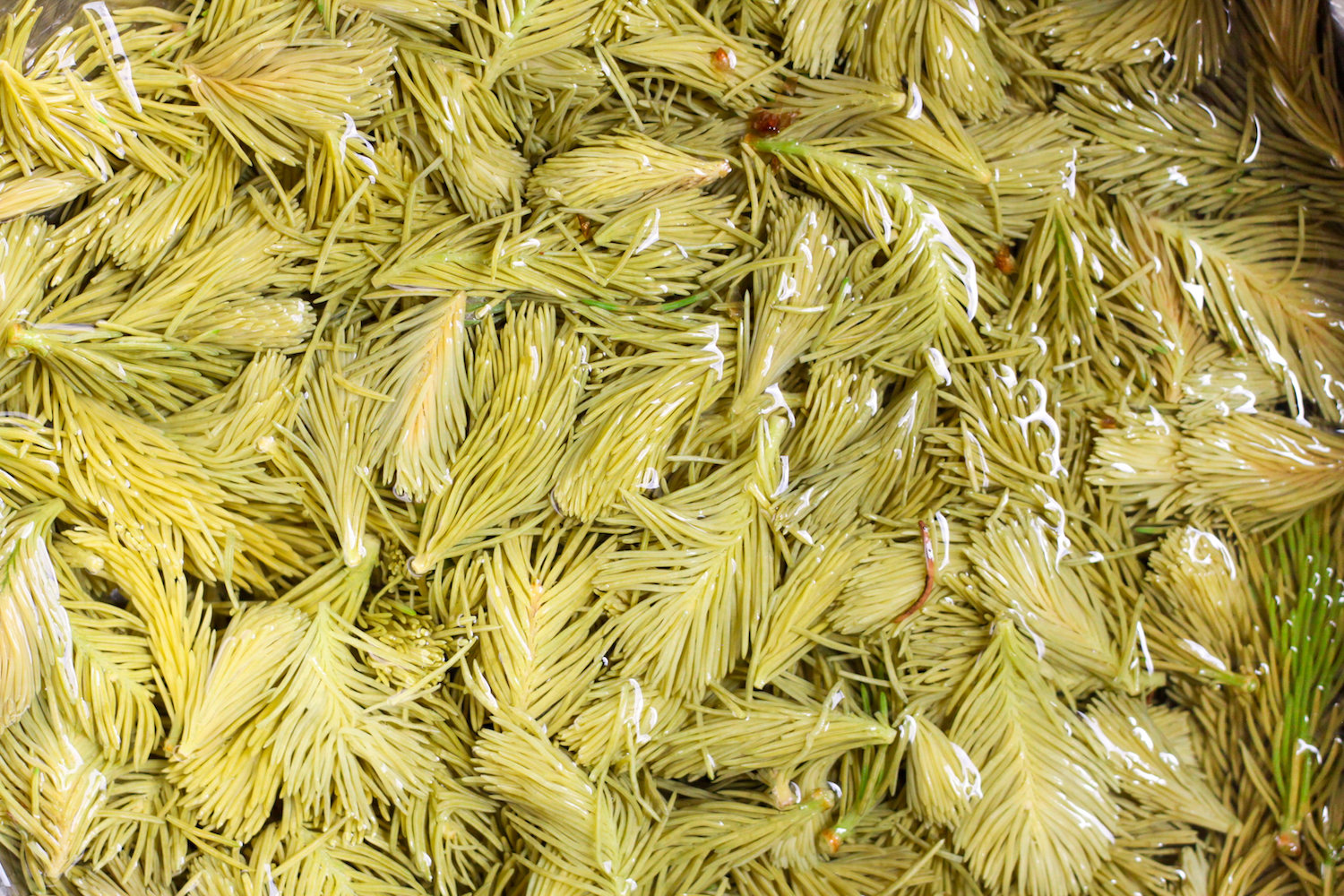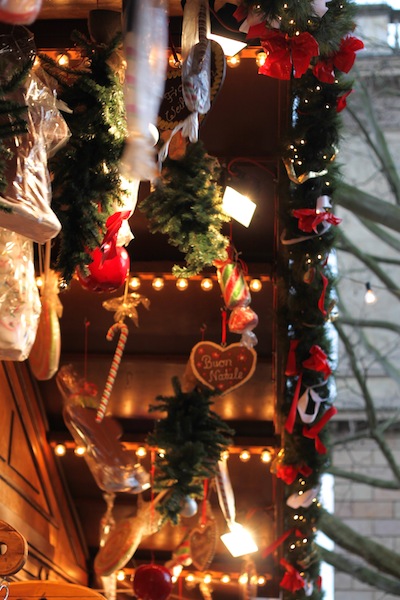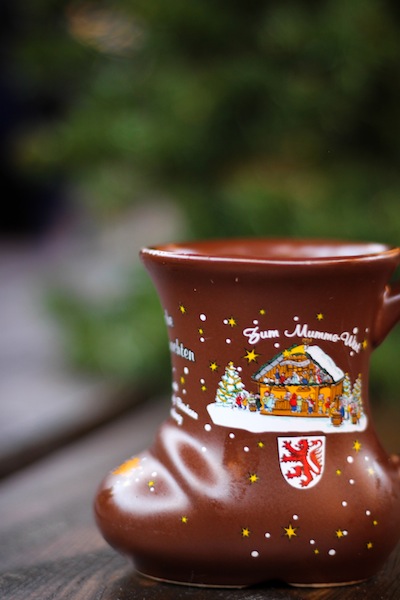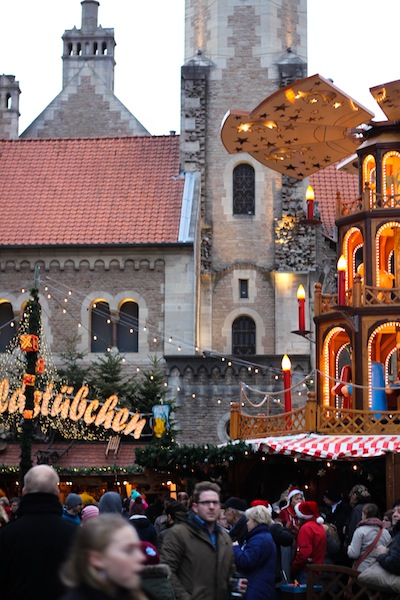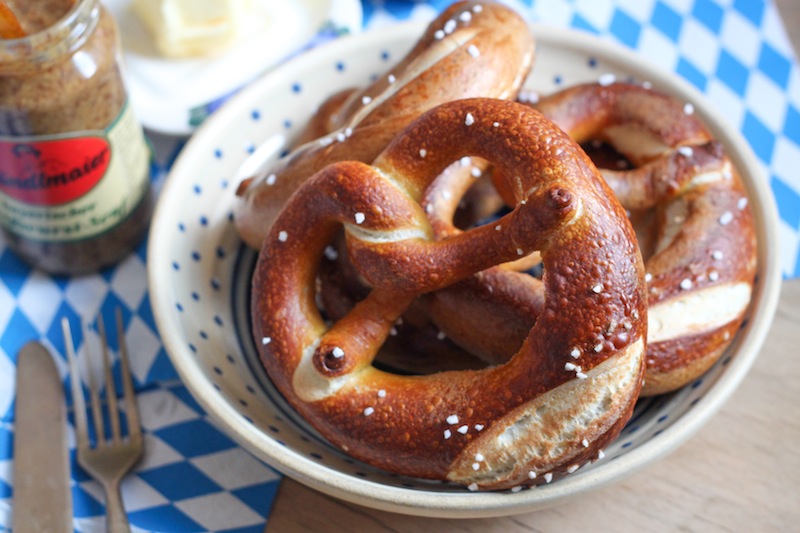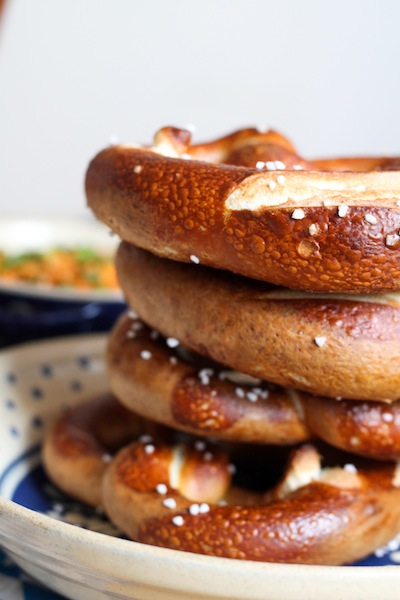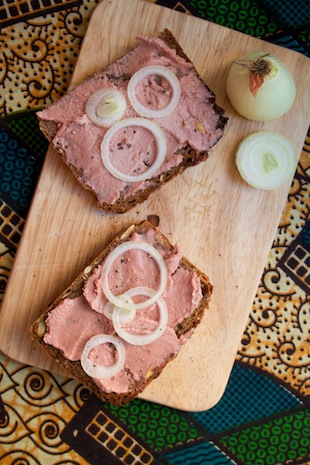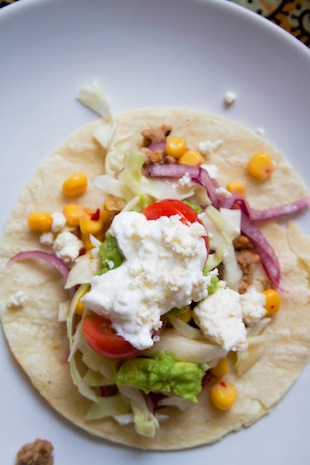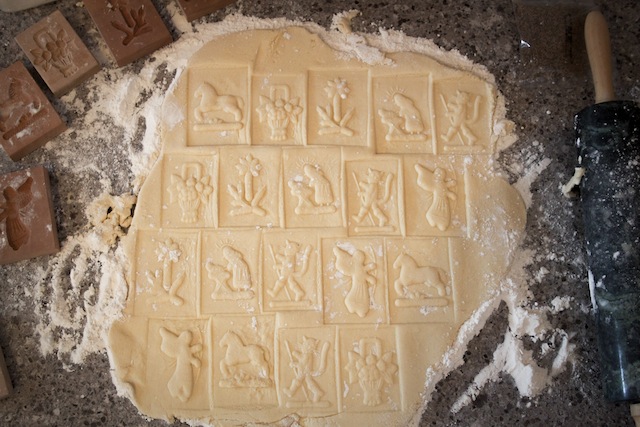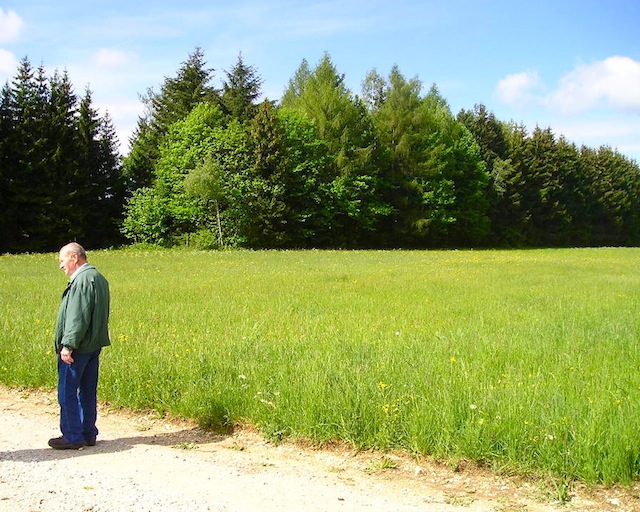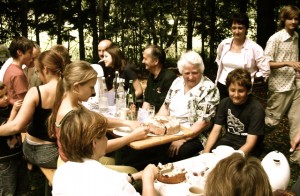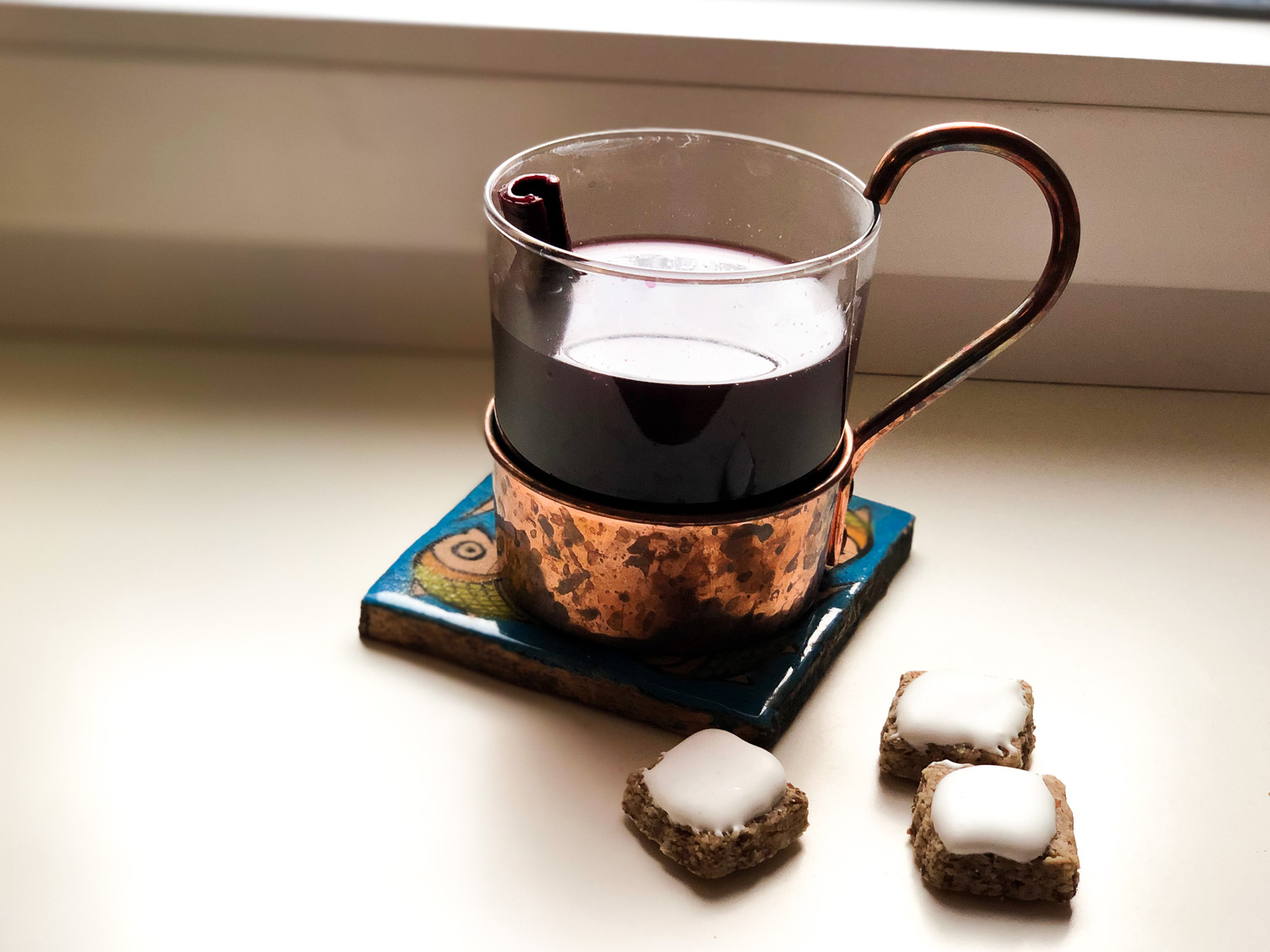
Every country that suffers from a dearth of winter daylight and an overabundance of ice has a favorite hot and alcoholic drink to get its residents through to warmer months. The Swedish have Glogg, the English mulled wine, and I’m sure somebody else has something (who gets the hot toddy?). In Germany, no December is complete without a few too many mugs of Glühwein clutched in a gloved hand and tightly held against the jostle of the Christmas market crowd.
On that note, no December in Berlin is complete without multiple visits to each of the different markets, effused with the scent of candied almonds and grilled bratwursts spitting fat. Each has its own character – Gendarmenmarkt is always overly packed, but you’ve got that post-Christmas-shopping vibe inspiring you to purchase just another bag of Baumkuchen bites. The market at Schloss Charlottenburg is expansive and twisting, filled with people selling suckling pig and potato pancakes, custom jewelry and chocolate-covered fruit. There, the Glühwein bar is a giant wooden windmill, one of those classic German Christmas decorations where the heat of candles sends the manger scene spinning.
Rixdorf feels like a neighborhood market where your friends are selling arts and crafts, while the market at Alexanderplatz is full of bored-looking vendors pouring just another glass of swill to the tourists who’ll be charmed by anything. This year, I even made it to the market in Braunschweig, where the Glühwein is served with a shot of Mumme, a thick malt extract that tempers the sugar.

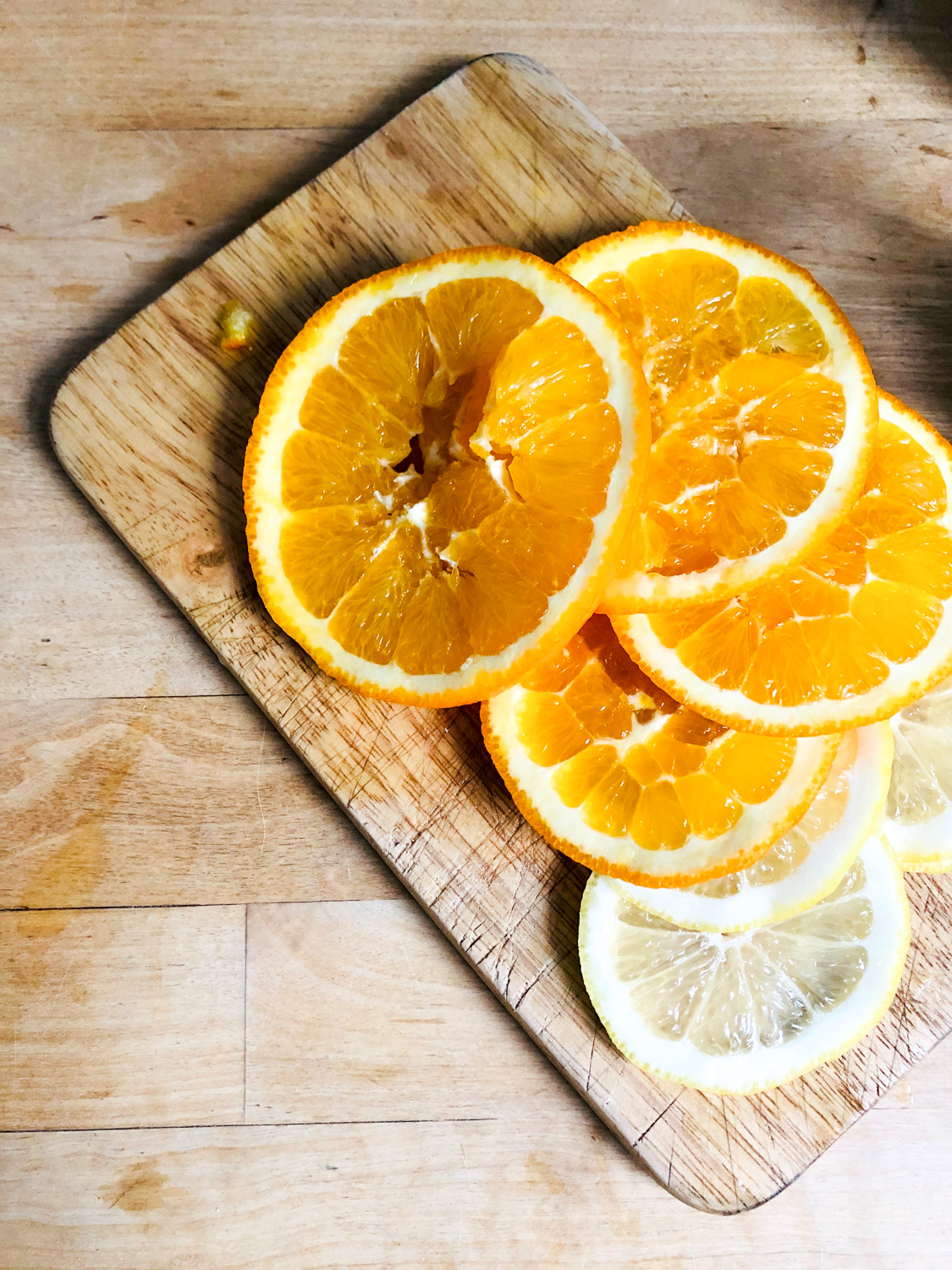
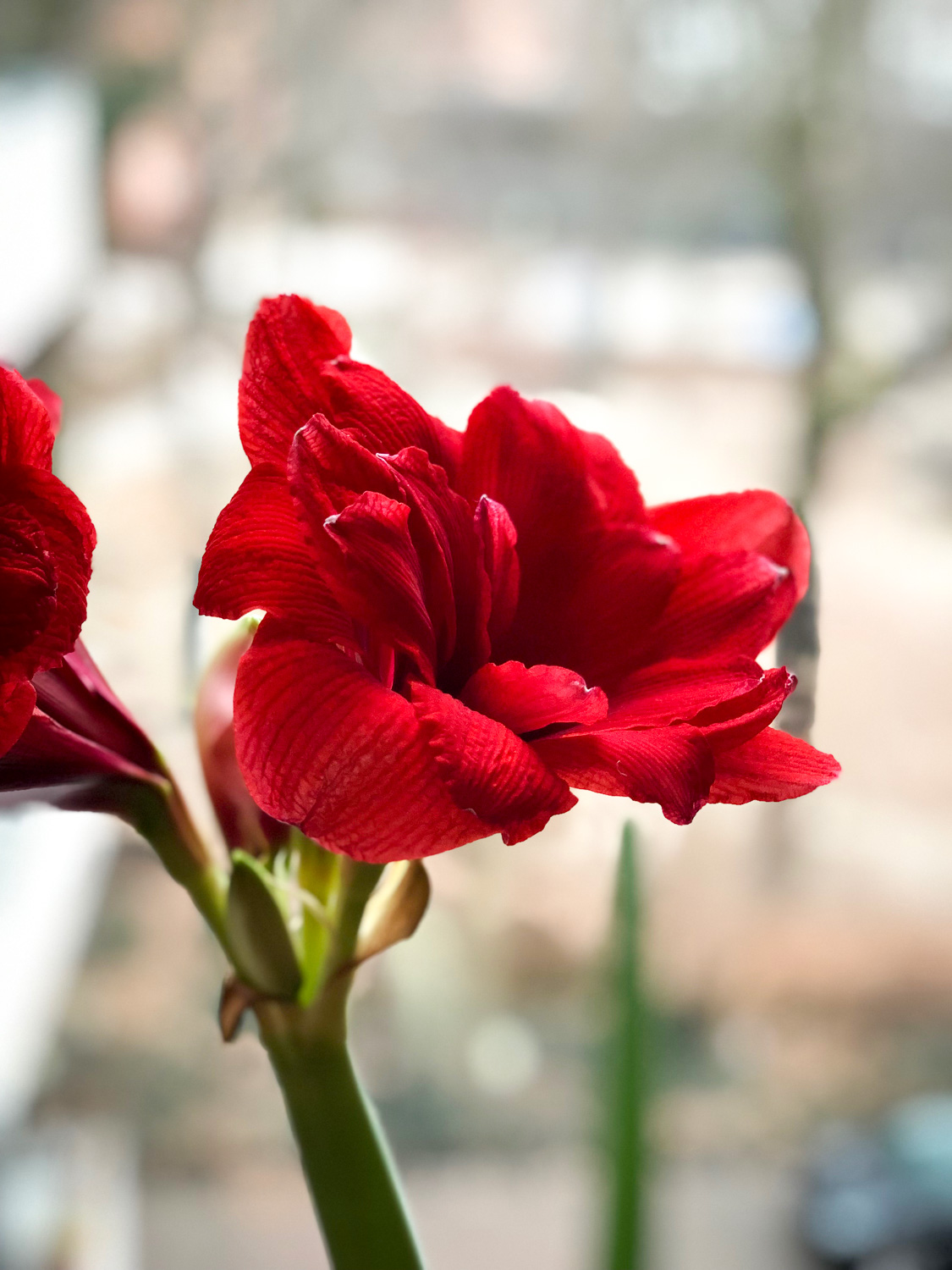


This year, I made Glühwein at home for the first time – and wondered why I’d never done it before. There’s something so wonderful about a pot of hot beverage perfuming the kitchen with spice while you stand at the counter rolling out dough for Zimtsterne – German Christmas cookies rich with cinnamon and almond and glazed with meringue – then taking your Glühwein to the living room and stretching out on the carpet in front of the little, live tree to write Christmas cards, even though you said you weren’t going to write any this year. » Continue reading this post...


